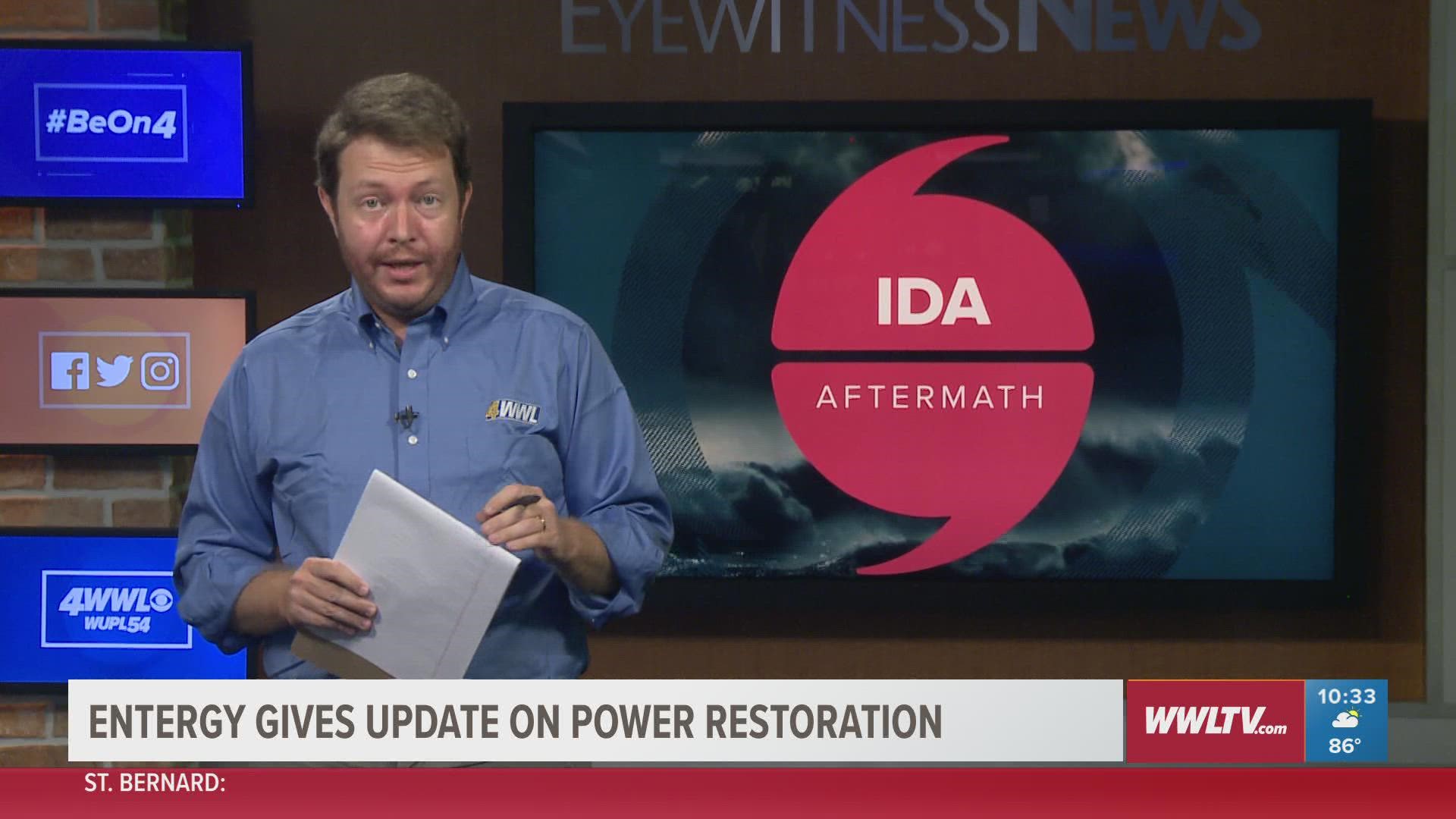NEW ORLEANS — For the most part, Verizon customers in New Orleans on the East Bank of the Mississippi River were among the few who were able to make phone calls and access the internet during and after Hurricane Ida's landfall.
Nearly a week later, there seems to be no available signal for cellular subscribers in areas like Lafourche Parish, where officials included the lack of cellphone connection in their messages to evacuees wishing to return.
Hurricane Ida's impacts on infrastructure were unprecedented, bringing down more powerlines than Hurricanes Delta, Zeta and Katrina combined.
But if the damage was so widespread and so devastating, why were Verizon subscribers still able to make calls while T-Mobile/Sprint and AT&T customers couldn't?
Anthony Nordin is a construction manager with one of the three major cellular companies and, according to him, it's all about the physical network of towers that transmit the signals.
"There are several factors that can explain why certain networks had a better connection after Hurricane Ida," Nordin said. "Among those is power."
Power
While cell towers are connected to commercial power, Louisiana residents know from experience commercial power isn't something that can be relied on during and after major storms.
More than a million homes and businesses lost power due to Hurricane Ida's impact on Entergy's power transmission and distribution systems, and some areas aren't expected to get power back until Sept. 29.
Typically, towers have either a backup generator or a bank of power batteries to keep them operating after natural disasters, Nordin said. But batteries are a stop-gap solution until power can be restored.
Generators are sometimes placed at towers in advance of natural disasters to keep the network up and running. Some towers in high-priority areas have a permanent generator.
But generators only work as long as they have fuel, and a fuel shortage, like the one Louisianans have been experiencing since Ida, might make it difficult for cellular companies to keep their networks up and running after a storm.
Every tower has to have a backup power plan.
Construction
When it comes to network infrastructure, AT&T and Verizon have had a head start, while the T-Mobile/Sprint network is still catching up, Nordin said.
Verizon, for example, has higher requirements for how network equipment is connected or secured on towers, Nordin said.
Some networks rely more heavily on towers on building rooftops, and those typically don't have a backup power supply, Nordin said.
Flooding
If a tower doesn't lose power and withstands the hurricane-force winds — that still might not be good enough to keep the network up, Nordin said.
Equipment at the base of cell towers isn't waterproof, Nordin said. If the equipment is flooded, that tower won't be able to keep people connected.
Moving forward
There isn't much each cellular company can do to keep the signal up once a storm hits, but hardening structures might make them more reliable after future storms, Nordin said.
Making towers more resilient against strong winds and elevating equipment to keep them from floodwaters might help. Having a generator with a large supply of fuel at each tower will definitely help with the power supply.
Transmitters should be secured to towers better at locations that will be regularly be impacted by tropical weather to withstand stronger winds.
So, there is much each cellular company can do before a storm hits, but will they?

